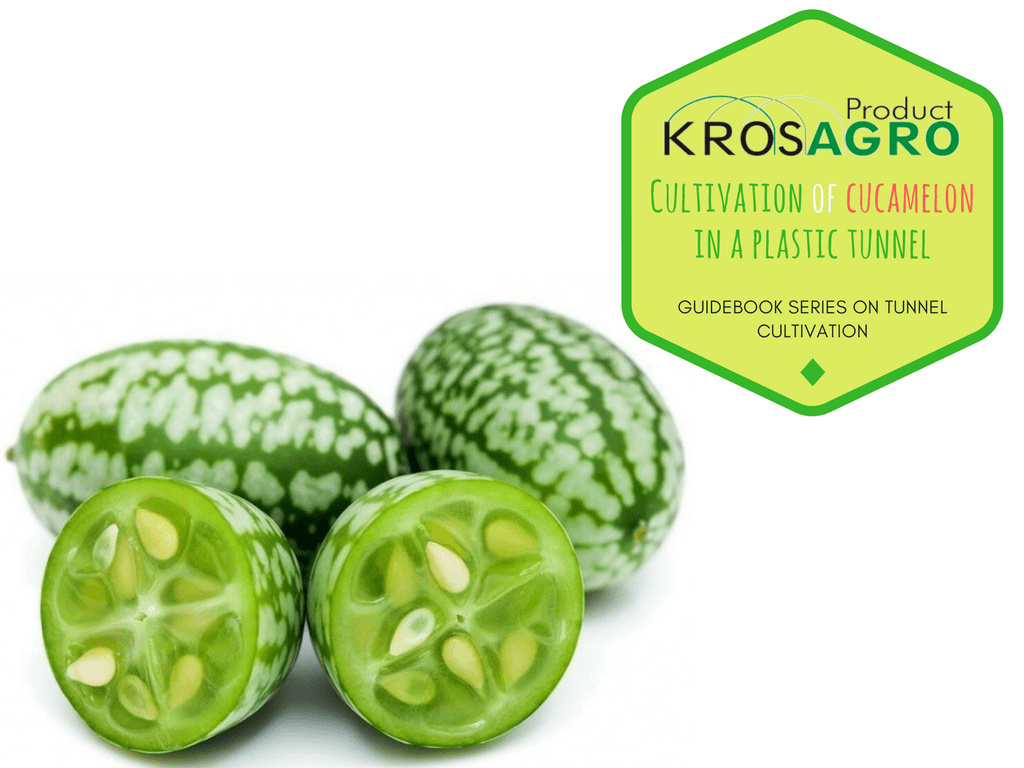This interesting fruit comes from Mexico. It catches the eye with its appearance, and its name triggers your curiosity. Mouse melon, mini watermelon or cucamelon are just a few of the names given to this unusual plant. Although the name refers to melon, the taste is very similar to our native cucumber. Despite its exotic origin, it is perfectly suited to the English climate. For its cultivation, a polytunnel will provide the gardener with a healthy and tasty crop.
Cultivation alone is not difficult, but long maturation means it needs to be planted quite early. Because of its thermophilic nature, watch out for frosts and low temperatures as these factors will affect it.
In this Krosagro guide, we will explain how to plant, cultivate and collect Mexican cucumber step by step in a polytunnel.
Contents
What is cucamelon?
Cucamelon is a vine producing dozens of fruits, with a size close to 2 to 3 cm. Mouse melon can reach 10 to 15 cm in width and up to 1.5 m in height. Which is why it is provided with supports to climb on. The Latin name Melothria scabra indicates that the plant is a completely different species. Than the native cucumber Cucumis sativus, although they have a lot in common.
The advantages of the plant are its resistance to pests and diseases. Even droughts will not affect it, making the whole cultivation process very easy. It can be grown as an annual or multi season plant; in the latter case, a positive temperature throughout the winter is a necessity.
Cultivation requirements
Position
As it is a thermophilic plant, it should have access to light and positive temperature as long as possible. Thanks to the cover, the structure will maintain the heat in the soil and air, which will favorably influence the development of the mini melon. The melon is likely to bear fruits in July, up to the first frosts. Throughout this stage, fruits will appear on each branch.
Soil
The optimum soil pH for cucamelon is 6.0 to 7.5. However, it is a tough plant, so it will also manage with a different substrate. It is important to avail of a medium-fertile and permeable soil.
Compared to cucumbers, it needs much less water, and an excess would harm it, so avoid flooding the root.
Sowing
Although open field cultivation is possible, bear in mind that it may end with failure or poor harvest. Planting mini watermelons under cover is a much better solution, as the gardener is able to control and adjust the conditions to the plant and its growing stage.
The plant is sown from the end of February to mid-April. You should wait until a positive temperature inside the garden tunnel is maintained. Seedlings need time to develop , but with each day the whole plant becomes thicker. It is crucial that the crops receive as much sun as possible, and the polytunnel should not be ventilated if there is no need to do so.
Sow the cucamelon first into multi-trays, then, as soon as they mature, transfer them to their location inside the greenhouse.
Seedling
Seedlings are usually prepared in a propagator so that the temperature remains at 24 ° C inside until emergence. Do not worry if the seedlings do not appear after one week. The plant needs sometimes 4 weeks to reach the stage where it can be transplanted permanently. When two to four leaves take shape, the temperature should be raised to 18 ° C. After a few days, the seedling is ready.
Spacing
It all depends on the cultivation method chosen by the gardener. The optimal solution is to deal with it like cucumbers. In that case, the plant is placed every 40 cm in rows, keeping a distance of 90 to 120 cm between them. Then it can run on a frame or rack .
Harvest of fruits
Harvest usually takes place from July to September. Only when they reach the size of 2.5 cm and obtain the shape of a grape can they be considered fully ripe. The soft and delicate ones are best for salads, while the hard ones can be marinated. As soon as the fruit is too ripe, it falls to the ground. Such mini watermelons can be dried and used as seed the following year.
